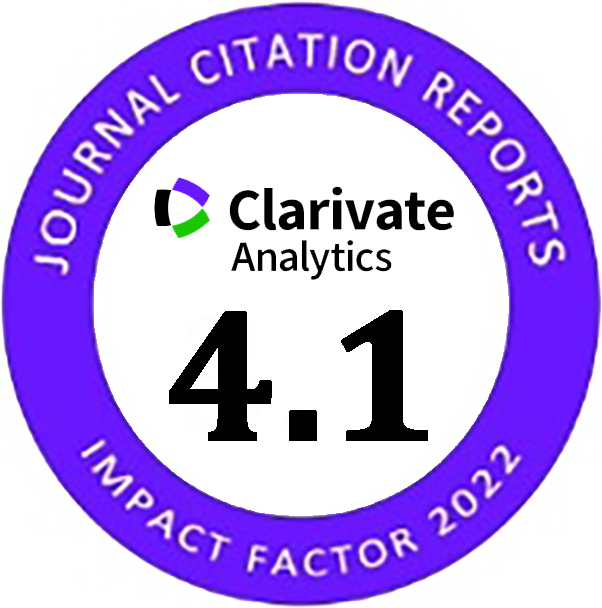Stabilization of Gypsum Clay Soil by Adding Lime
Abstract
Doi: 10.28991/CEJ-2022-08-11-010
Full Text: PDF
Keywords
References
Xu, L., Zha, F., Liu, C., Kang, B., Liu, J., & Yu, C. (2020). Experimental Investigation on Carbonation Behavior in Lime-Stabilized Expansive Soil. Advances in Civil Engineering, 2020, 1–14. doi:10.1155/2020/7865469.
Harichane, K., Ghrici, M., & Kenai, S. (2012). Effet de la combinaison de la chaux et de la pouzzolane naturelle sur le compactage et la résistance des sols mous argileux. MATEC Web of Conferences, 2, 02009. doi:10.1051/matecconf/20120202009.
Parsons, R. L., & Kneebone, E. (2005). Field performance of fly ash stabilised subgrades. Proceedings of the Institution of Civil Engineers-Ground Improvement, 9(1), 33-38. doi:10.1680/grim.9.1.33.58543.
Ma, J., Su, Y., Liu, Y., & Tao, X. (2020). Strength and Microfabric of Expansive Soil Improved with Rice Husk Ash and Lime. Advances in Civil Engineering, 2020, 1–8. doi:10.1155/2020/9646205.
Osula, D. O. A. (1996). A comparative evaluation of cement and lime modification of laterite. Engineering Geology, 42(1), 71–81. doi:10.1016/0013-7952(95)00067-4.
Djouimaa, S., Sid, M., & Hidjeb, M. (2018). Effect of lime and cement on the geotechnical properties of an expansive soil. International Review of Civil Engineering, 9(3), 122–130. doi:10.15866/irece.v9i3.14457.
Liu, Q., Jiang, Q., Huang, M., Xin, J., & Chen, P. (2022). The fresh and hardened properties of 3D printing cement-base materials with self-cleaning nano-TiO2: An exploratory study. Journal of Cleaner Production, 379, 134804. doi:10.1016/j.jclepro.2022.134804.
Al-Rawas, A. A., Hago, A. W., & Al-Sarmi, H. (2005). Effect of lime, cement and Sarooj (artificial pozzolan) on the swelling potential of an expansive soil from Oman. Building and Environment, 40(5), 681–687. doi:10.1016/j.buildenv.2004.08.028.
Okagbue, C. O., & Yakubu, J. A. (2000). Limestone ash waste as a substitute for lime in soil improvement for engineering construction. Bulletin of Engineering Geology and the Environment, 58(2), 107–113. doi:10.1007/s100640050004.
Sakr, M. A., Shahin, M. A., & Metwally, Y. M. (2009). Utilization of lime for stabilizing soft clay soil of high organic content. Geotechnical and Geological Engineering, 27(1), 105–113. doi:10.1007/s10706-008-9215-2.
Kavak, A., & Baykal, G. (2012). Long-term behavior of lime-stabilized kaolinite clay. Environmental Earth Sciences, 66(7), 1943–1955. doi:10.1007/s12665-011-1419-8.
Guney, Y., Sari, D., Cetin, M., & Tuncan, M. (2007). Impact of cyclic wetting–drying on swelling behavior of lime-stabilized soil. Building and Environment, 42(2), 681–688. doi:10.1016/j.buildenv.2005.10.035.
Sahoo, J. P., & Pradhan, P. K. (2010). Effect of Lime Stabilized Soil Cushion on Strength Behaviour of Expansive Soil. Geotechnical and Geological Engineering, 28(6), 889–897. doi:10.1007/s10706-010-9332-6.
Harichane, K., Ghrici, M., Kenai, S., & Grine, K. (2011). Use of Natural Pozzolana and Lime for Stabilization of Cohesive Soils. Geotechnical and Geological Engineering, 29(5), 759–769. doi:10.1007/s10706-011-9415-z.
al-Swaidani, A., Hammoud, I., & Meziab, A. (2016). Effect of adding natural pozzolana on geotechnical properties of lime-stabilized clayey soil. Journal of Rock Mechanics and Geotechnical Engineering, 8(5), 714–725. doi:10.1016/j.jrmge.2016.04.002.
Al-Mukhtar, M., Khattab, S., & Alcover, J. F. (2012). Microstructure and geotechnical properties of lime-treated expansive clayey soil. Engineering Geology, 139–140, 17–27. doi:10.1016/j.enggeo.2012.04.004.
ASTM D698-12(2021). (2021). Standard Test Methods for Laboratory Compaction Characteristics of Soil Using Standard Effort (12,400ft-ibf/ft3 (600 kN-m/m3)). ASTM International, Pennsylvania, United States. doi:10.1520/D0698-12R21.
Song, Y., Zhang, M., Gan, X., Dong, S., Ding, S., Geng, Y., & Li, J. (2022). Experimental Study on Mechanical Strength of Diesel-Contaminated Red Clay Solidified with Lime and Fly Ash. Geofluids, 2022, 1–12. doi:10.1155/2022/3891030.
ASTM D2166-00. (2017). Standard Test Methods for Unconfined Compressive Strength of Cohesive Soil. ASTM International, Pennsylvania, United States. doi:10.1520/D2166-00.
Bell, F. G. (1989). Lime stabilisation of clay soils. Bulletin of the International Association of Engineering Geology, 39(1), 67–74. doi:10.1007/bf02592537.
Bell, F. G. (1996). Lime stabilization of clay minerals and soils. Engineering Geology, 42(4), 223–237. doi:10.1016/0013-7952(96)00028-2.
Ola, S. A. (1977). The potentials of lime stabilization of lateritic soils. Engineering Geology, 11(4), 305–317. doi:10.1016/0013-7952(77)90036-9.
Hossain, K. M. A., Lachemi, M., & Easa, S. (2007). Stabilized soils for construction applications incorporating natural resources of Papua new Guinea. Resources, Conservation and Recycling, 51(4), 711–731. doi:10.1016/j.resconrec.2006.12.003.
Manasseh, J., & Olufemi, A. I. (2008). Effect of lime on some geotechnical properties of Igumale shale. Electronic Journal of Geotechnical Engineering, 13(6), 1–12.
Akula, P., & Little, D. N. (2020). Analytical tests to evaluate pozzolanic reaction in lime stabilized soils. MethodsX, 7, 100928. doi:10.1016/j.mex.2020.100928.
Bruce, D. A. (2001). Practitioner’s guide to the deep mixing method. Ground Improvement, 5(3), 95–100. doi:10.1680/grim.5.3.95.40325.
Topolnicki, M. (2004). In-situ soil mixing, Chapter 9. Ground Improvement (2nd Ed.). Spon Press, Abingdon, United Kingdom.
Terashi, M. (2005). Keynote lecture: design of deep mixing in infrastructure applications. In Proc. International Conference on Deep Mixing Best Practice and Recent Advances-Deep Mixing, 23-25 May, 2005, Stockholm, Sweden.
Jha, A. K., & Sivapullaiah, P. V. (2015). Mechanism of improvement in the strength and volume change behavior of lime stabilized soil. Engineering Geology, 198, 53–64. doi:10.1016/j.enggeo.2015.08.020.
Uppal, H. L., & Chadda, L. R. (1967). Physico-chemical changes in the lime stabilization of black cotton soil (India). Engineering Geology, 2(3), 179–189. doi:10.1016/0013-7952(67)90017-8.
Bensalem, A. (2010). Characterization and exploitation of Benazzouz clay in road construction. (Memory of Magister) Badji Mokhtar Annaba University, Annaba, Algeria.
Bouazza, A. (2018). Study on the stability of soil with a gypsum-sandy clay matrix by mineral additions (ABADLA South West Algerian Region), University of Tahri-Mohamed-Bechar, Béchar, Algeria.
Contessi, S., Dalconi, M. C., Pollastri, S., Calgaro, L., Meneghini, C., Ferrari, G., ... & Artioli, G. (2021). Cement-stabilized contaminated soil: understanding Pb retention with XANES and Raman spectroscopy. Science of the Total Environment, 752, 141826. doi:10.1016/j.scitotenv.2020.141826.
Holm, G. (1979). Lime column stabilization-experiences concerning strength and deformation properties. Vag-Och Vattenbyggaren, 25(7/8), 45-48.
Solanki, P., Khoury, N., & Zaman, M. M. (2009). Engineering Properties and Moisture Susceptibility of Silty Clay Stabilized with Lime, Class C Fly Ash, and Cement Kiln Dust. Journal of Materials in Civil Engineering, 21(12), 749–757. doi:10.1061/(asce)0899-1561(2009)21:12(749).
Basack, S., Goswami, G., Khabbaz, H., Karakouzian, M., Baruah, P., & Kalita, N. (2021). A comparative study on soil stabilization relevant to transport infrastructure using bagasse ash and stone dust and cost effectiveness. Civil Engineering Journal, 7(11), 1947–1963. doi:10.28991/cej-2021-03091771.
DOI: 10.28991/CEJ-2022-08-11-010
Refbacks
- There are currently no refbacks.
Copyright (c) 2022 ikram / saidate

This work is licensed under a Creative Commons Attribution 4.0 International License.







